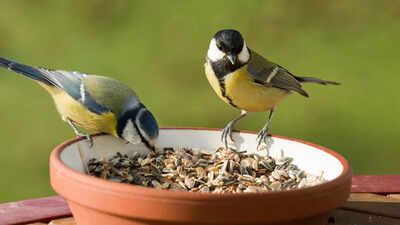ARTICLE AD BOX

Creating a bird-friendly garden is a simple yet powerful way to support local wildlife while bringing nature’s beauty closer to home. Birds not only add life and colour to your outdoor space but also play a vital role in ecosystems by controlling insects and spreading seeds.
With global wildlife populations declining dramatically, even small actions in your own garden can make a meaningful difference. From providing reliable food and clean water to offering shelter, nesting opportunities, and safe spaces, there are many ways to encourage birds to visit. These steps help birds thrive and give you the joy of watching them flourish.
Tips to bring more birds into your garden and help nature thrive

Provide a range of food and feeder types
Different birds have different preferences. Some enjoy perching on feeders, others prefer eating on the ground or at a bird table.
Likewise, dietary preferences vary: sunflower seeds appeal to many species, while Nyjer seeds attract finches. Offering a variety of foods and feeder styles increases the diversity of birds visiting your garden and ensures that every species finds something it enjoys.
Feed them consistently
Once you start feeding birds, consistency is key. Birds quickly learn to depend on a food source, so empty feeders can discourage them from returning.
Keep a steady supply of bird food and refill feeders daily. Regular feeding helps build trust and ensures your feathered visitors know they can rely on your garden as a safe source of nourishment.
Spread feeders around
Crowding feeders in one spot can lead to dominant birds scaring others away. By spreading feeders across the garden, you provide more space and safer feeding opportunities for shy or smaller species. Multiple feeding areas also create a more dynamic environment, attracting a wider range of birds to different parts of your garden.
Keep food mold-free and clean feeders regularly
Hygiene is essential to maintain a healthy bird population. Old or mouldy food can harm birds, and dirty feeders can spread disease. Clean feeders frequently and replace old food with fresh supplies to ensure that your garden remains a safe place for visiting wildlife. Healthy birds are more likely to become regular visitors.
Provide natural foraging opportunities

Not all birds are keen on feeders. Encourage natural foraging by creating micro-habitats in your garden.
Leaving sunflowers to go to seed attracts seed-eaters, while a small pond or damp log pile supports insects for insect-eating birds. Watching birds forage naturally can be more engaging than seeing them at a feeder and helps maintain their instincts and health.
Give them somewhere to bathe
Water is essential for drinking and feather maintenance. A pond or bird bath allows birds to drink and bathe, which helps them stay clean and healthy. Birds also enjoy dust baths; leaving a bare patch of soil or a shallow tray of dry sand lets them remove excess oils and parasites from their feathers naturally.
Try running water or a fountain
The sound and movement of running water attract birds and discourage stagnant water, which can be unhealthy. Even a small solar-powered fountain or gentle water stream can draw more birds to your garden. The sight and sound of flowing water make your space more inviting and can encourage birds to linger longer.
Provide nesting boxes (of Various Types)
Nest boxes support breeding birds, giving them a safe place to raise chicks. Different species have different requirements, so offer boxes suitable for local birds and place them in sheltered spots, such as behind bushes or on tree branches.
Nest boxes not only benefit wildlife but also give you the chance to watch fledglings grow and develop.
Help them find suitable nesting material
Birds need natural materials to build strong nests. Avoid synthetic fibres, hair treated with chemicals, or long threads that can entangle birds. Offer moss, twigs, dried leaves, and grass clippings, or leave parts of your garden untidy to allow birds to source materials themselves. This helps ensure nests are safe and sustainable.
Provide shelter and safe spaces
Birds need protection from predators and harsh weather. Dense shrubs, trees, and tall plants provide cover and hiding places. Leaving sections of the garden more natural and untamed gives birds room to flit, forage, and rest safely. A garden with plenty of shelter encourages more species to visit regularly.
Keep cats and dogs controlled
Pets, even if they don’t hunt, can deter birds from visiting. Limit free access for dogs during feeding times, and consider keeping cats indoors or building a safe outdoor enclosure (‘catio’).
By reducing the stress posed by pets, your garden becomes a safer and more inviting space for birds.Birdwatching in your garden is rewarding, giving you a sense of pride while helping local wildlife thrive. By providing consistent food, water, shelter, and safe nesting opportunities, you can transform your garden into a vibrant oasis for birds. Letting parts of your garden grow wild not only supports nature but also allows you to spend more time enjoying the sights and sounds of your feathered visitors.Also Read: How to clean glass shower doors: Easy ways to remove soap scum and stains



.png)
.png)
.png)
















 1 hour ago
4
1 hour ago
4









 English (US) ·
English (US) ·